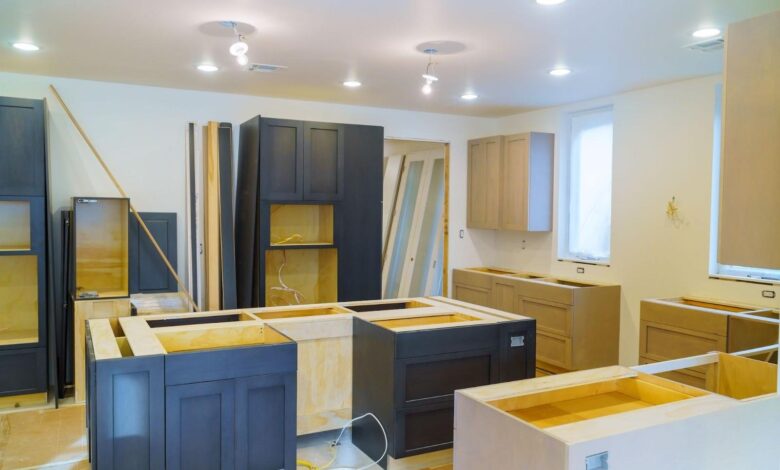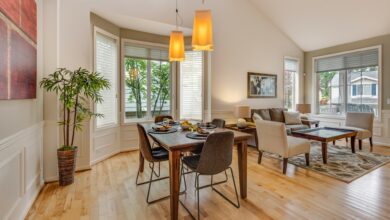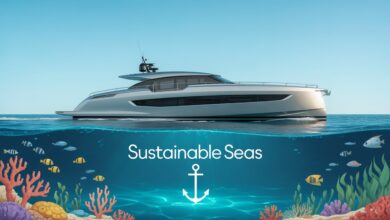Top Energy-Efficient Upgrades for Washington Home Remodels

Energy efficiency is no longer just a trend — it’s a smart investment that pays off in comfort, savings, and sustainability. For homeowners in Washington State, where temperatures vary between rainy winters and mild summers, upgrading your home for better energy performance can make a big difference.
Whether you’re planning a full renovation or a simple refresh, energy-efficient remodeling upgrades can help reduce utility bills, boost your home’s value, and create a healthier living space. Let’s explore the top upgrades that make sense for Washington homes.
1. Upgrade to High-Performance Windows
Washington’s weather demands windows that can handle everything from coastal rain to mountain chill. Traditional single-pane windows lose a lot of heat, which forces your heating system to work harder.
Why it matters:
- Energy-efficient windows (like double or triple-pane models) have insulated glass that reduces heat loss.
- Low-E coatings reflect infrared light, keeping your home warmer in winter and cooler in summer.
- Proper sealing also reduces condensation — a common issue in Washington’s damp climate.
If your remodel includes replacing windows, choose Energy Star-certified windows designed for the Pacific Northwest climate zone.
2. Add or Improve Insulation
Insulation is one of the easiest ways to enhance energy efficiency during a remodel. Many older Washington homes were built with minimal insulation, especially in attics, crawl spaces, and walls.
Consider these options:
- Spray foam insulation seals air leaks effectively.
- Fiberglass batts are cost-effective and easy to install.
- Blown-in cellulose offers excellent coverage for older homes.
Even if your walls already have insulation, you may benefit from upgrading materials or adding vapor barriers to protect against Washington’s humidity.
3. Install a Smart Thermostat
A small upgrade with big rewards — smart thermostats learn your schedule and adjust heating and cooling automatically.
Benefits include:
- Up to 10–15% reduction in annual energy costs.
- Remote control via smartphone apps.
- Real-time monitoring of energy use.
Pairing a smart thermostat with a high-efficiency HVAC system can optimize comfort throughout the year.
4. Choose Energy-Efficient Lighting
Lighting accounts for nearly 10% of an average household’s energy use. Switching to LED lighting can cut that down significantly.
Simple lighting upgrades include:
- Installing dimmers and motion sensors to reduce unnecessary use.
- Choosing daylight-balanced LEDs for natural brightness.
- Using solar-powered outdoor lights to illuminate pathways and decks.
Not only do these bulbs last longer, but they also reduce heat output, making them perfect for homes during Washington’s warm summer months.
5. Upgrade Appliances During Your Remodel
If your renovation includes a kitchen or laundry update, consider replacing old appliances with Energy Star-rated models.
Top energy-saving options:
- Induction cooktops for faster, more efficient cooking.
- High-efficiency dishwashers that use less water and power.
- Front-load washing machines that use minimal water per cycle.
These modern appliances are not only sleek but also designed to perform better while lowering your utility bills.
6. Go Solar — Even in Washington
It might surprise you, but Washington is a great state for solar power. Despite cloudy skies, solar panels can still generate plenty of electricity year-round thanks to long summer days.
Why consider solar:
- State and federal incentives can reduce installation costs.
- Solar power can significantly lower your electric bill.
- Homes with solar systems often have higher resale value.
You can start small — like adding solar-powered water heaters — or plan a full solar panel installation as part of your remodel.
7. Replace Old Doors and Seals
Even a beautifully remodeled home can lose energy through drafty doors. Replacing older exterior doors or adding weather stripping can improve comfort and efficiency.
Look for:
- Doors with insulated cores.
- Proper sealing around frames.
- Materials like fiberglass or steel that resist moisture.
Small upgrades like this make a noticeable difference in homes exposed to Washington’s damp coastal air.
8. Consider Eco-Friendly Flooring Options
Flooring might not be the first thing you think of when going green, but it plays a role in sustainability.
Popular energy-efficient materials include:
- Cork flooring – naturally insulating and renewable.
- Bamboo – a durable, sustainable alternative to hardwood.
- Engineered wood – less prone to warping in humid environments.
When paired with radiant floor heating, these options keep your home warm efficiently through the cold months.
9. Add Proper Ventilation Systems
In humid climates like Washington’s, controlling indoor air quality is key. A well-ventilated home prevents mold growth and improves air circulation.
During your remodel, consider:
- Adding exhaust fans in bathrooms and kitchens.
- Installing a heat recovery ventilator (HRV) system.
- Ensuring attic vents are clear to prevent moisture buildup.
If you’re working with local remodeling professionals experienced in home energy upgrades, they can help design a ventilation system that fits your home’s layout and needs.
10. Upgrade to an Efficient Water Heating System
Hot water accounts for nearly 20% of a home’s energy use. Switching to a tankless water heater or heat pump water heater can reduce energy consumption.
- Tankless systems heat water on demand, eliminating standby energy loss.
- Heat pump water heaters use air or ground heat to warm water more efficiently.
This is an ideal upgrade to include when remodeling bathrooms, laundry rooms, or kitchens.
How Remodeling Contractors Help with Energy Efficiency
Homeowners often underestimate how much an experienced remodeling contractor can improve a home’s energy performance. Professionals not only install new materials but also identify weak spots — like poor insulation, air leaks, or outdated systems — that waste energy.
If you’re starting a large renovation, partner with a remodeling service that specializes in sustainable home design to ensure every part of your project — from materials to appliances — aligns with long-term energy goals.
Final Thoughts
Energy-efficient remodeling is about more than saving money. It’s about creating a comfortable, healthy home that’s built to last.
By upgrading windows, insulation, appliances, and heating systems, Washington homeowners can enjoy lower bills, better comfort, and a smaller carbon footprint.
Whether you’re planning a kitchen renovation or a full home remodel, consulting experienced energy-efficient remodeling experts in Washington can help you choose upgrades that deliver real, measurable value — both for your home and the planet.




